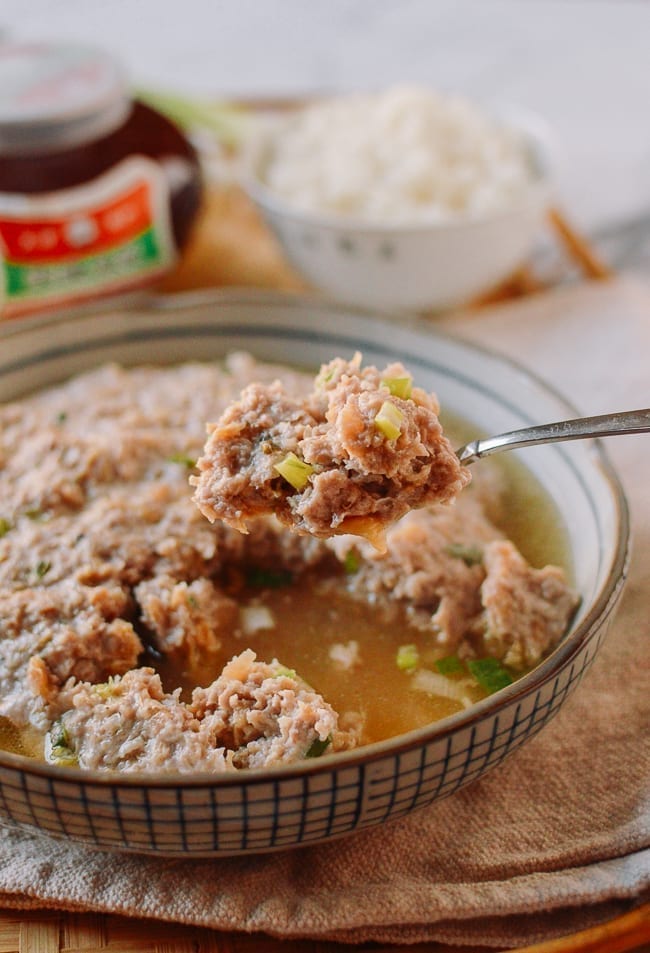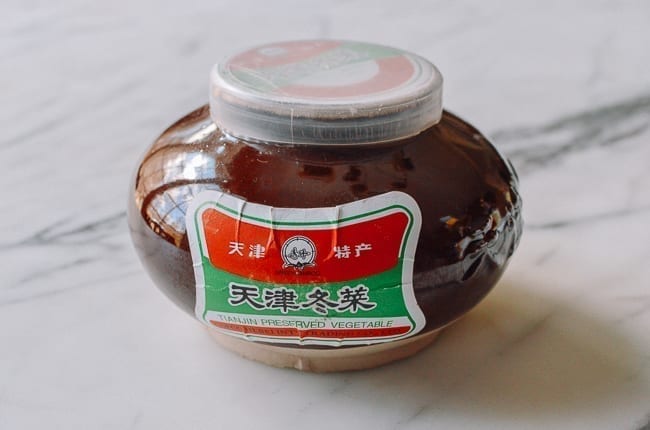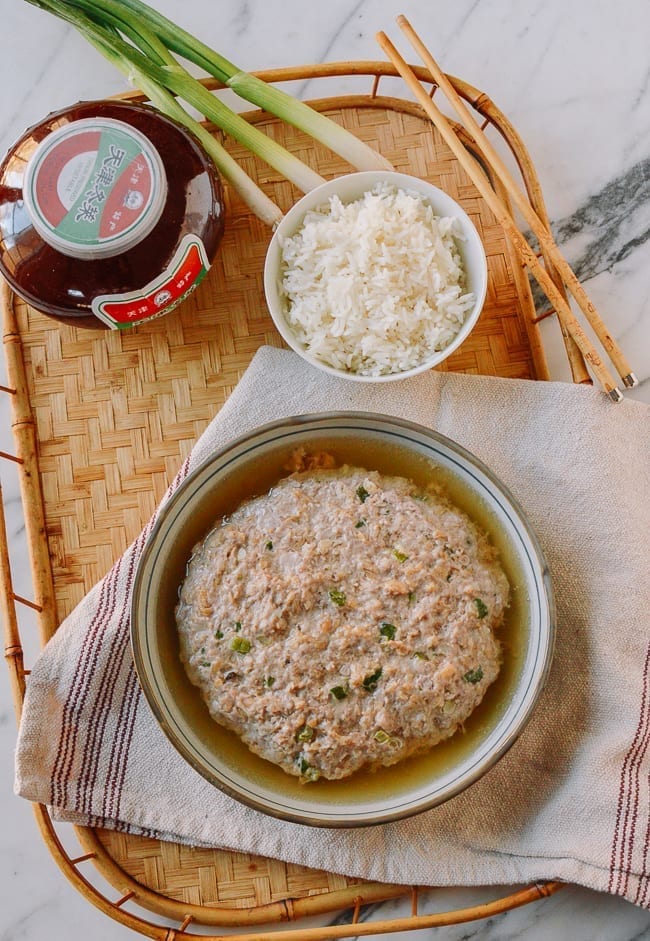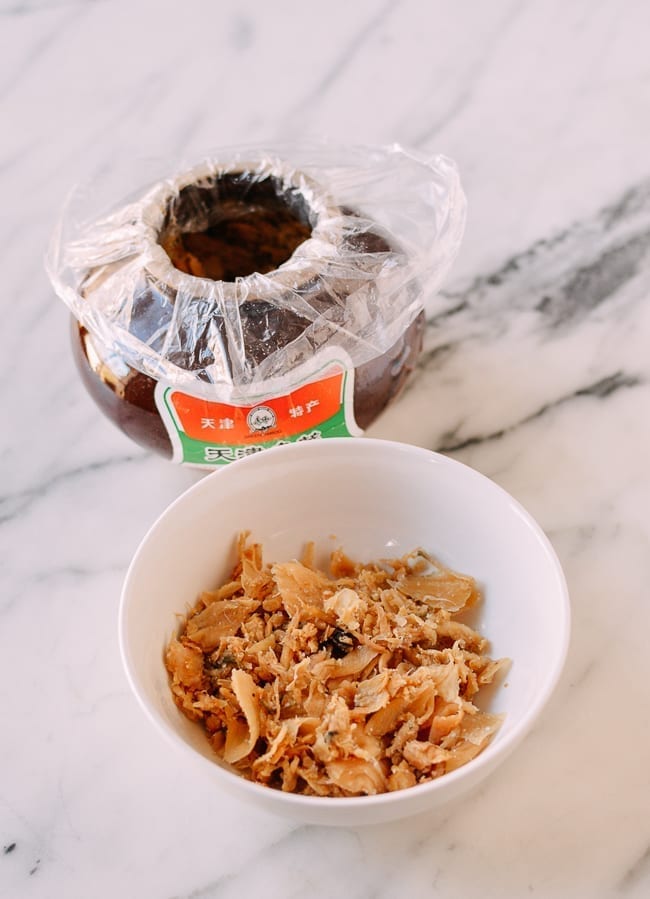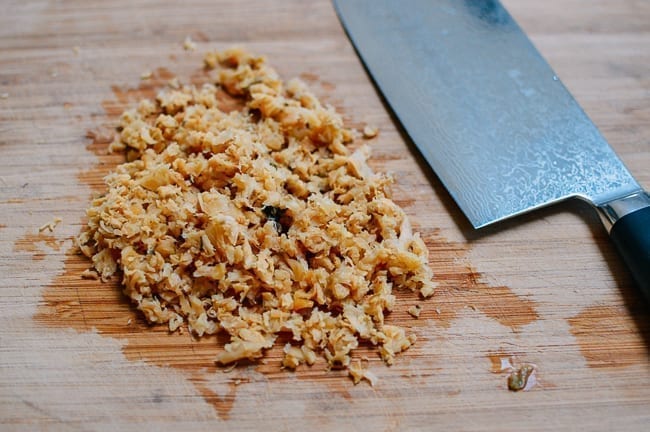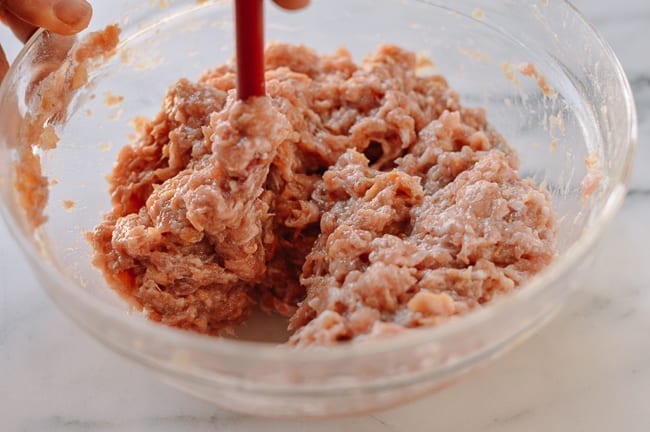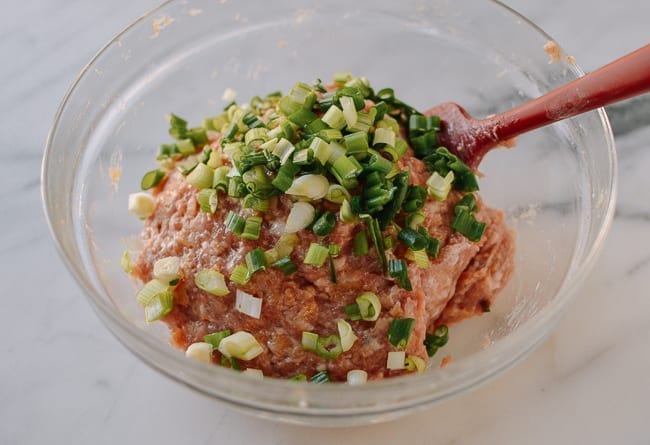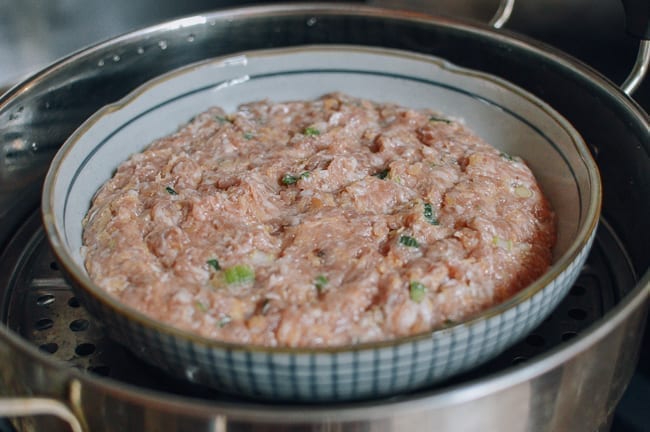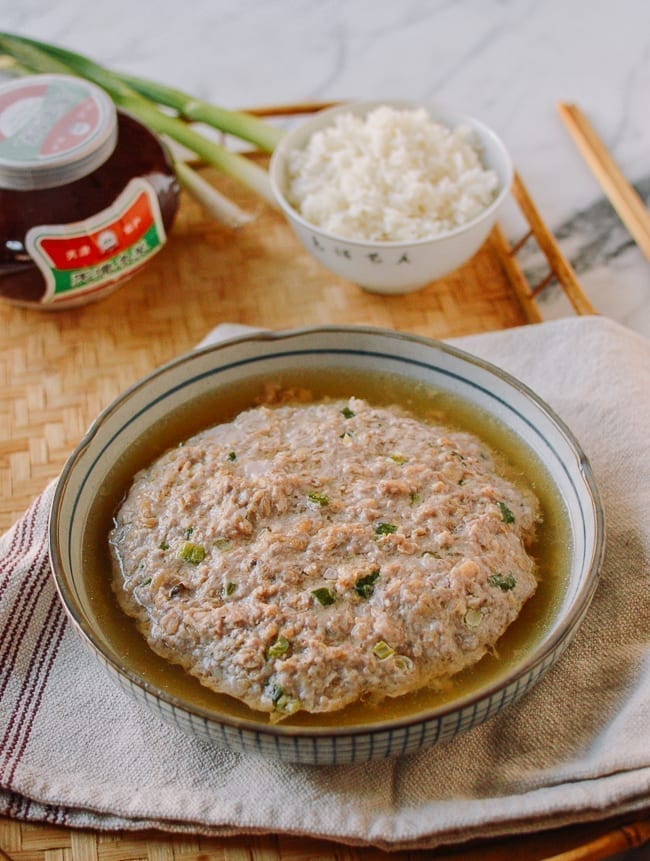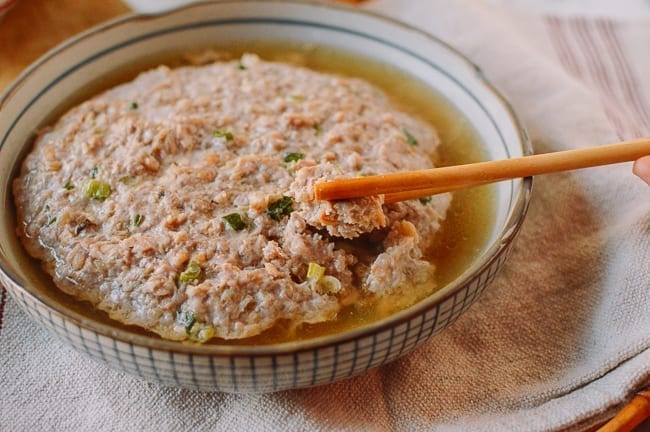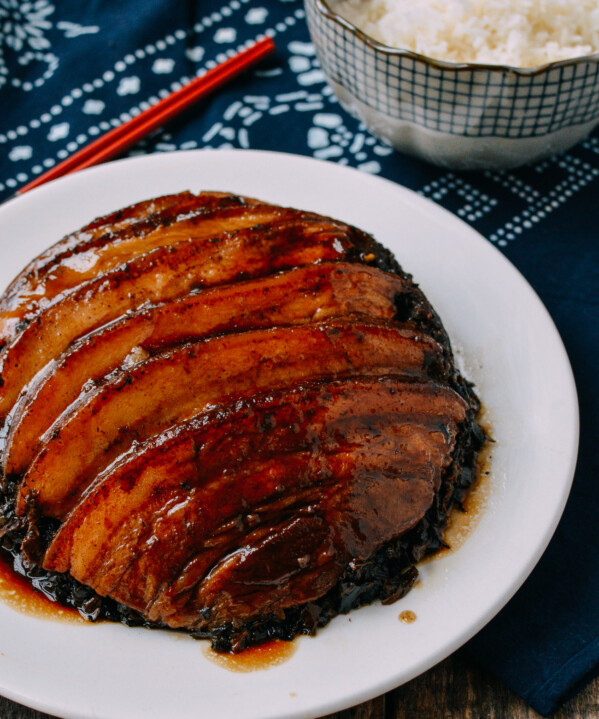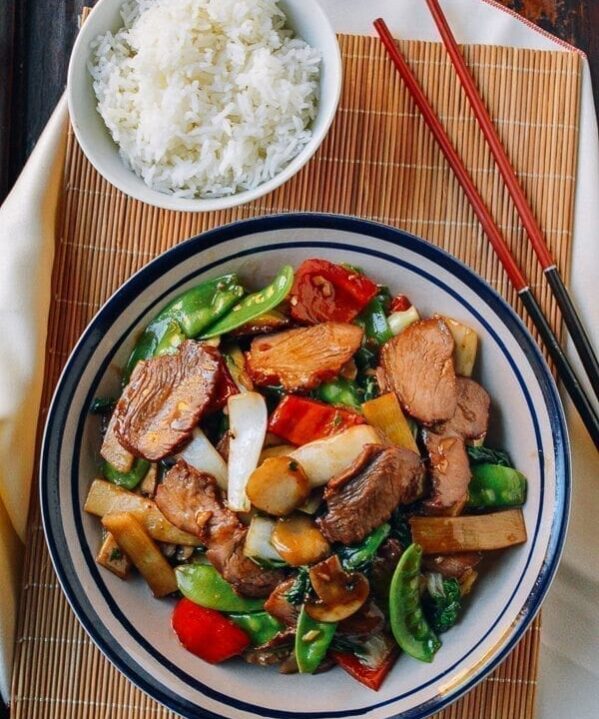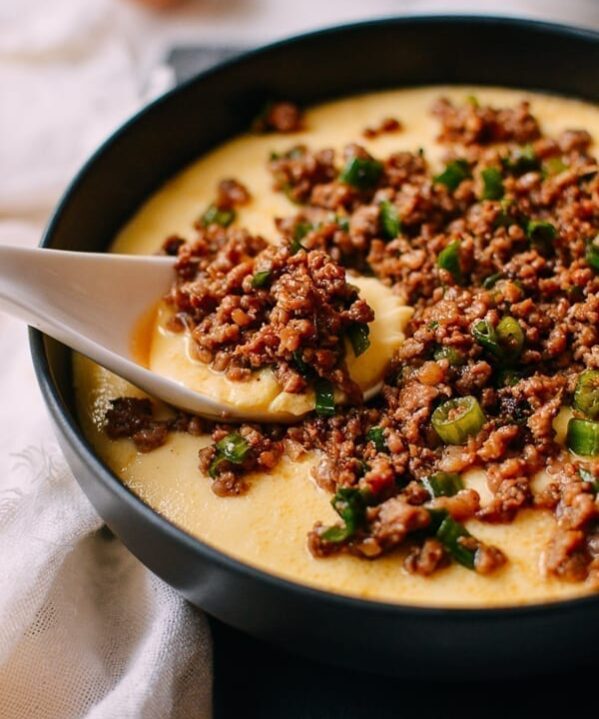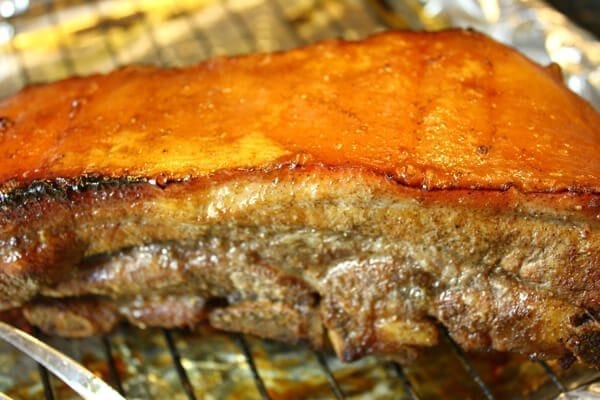This steamed pork patty (or yook baeng) with Tianjin preserved vegetables (冬菜蒸肉饼) was a blast from the past. It just came to me recently, like it wanted its presence known to our family again. I’m glad it did, because it’s insanely good.
Many years ago, Bill’s father used to make this steamed pork patty often at the Chinese restaurant they owned, for the staff meal. His staff was basically family!
I remember restaurant patrons gawking at our unfamiliar looking dishes, but also lamenting the fact that our home cooking wasn’t on the menu for them to order.
What Are Tianjin Preserved Vegetables?
The dong cai (冬菜) in this recipe refers to a type of preserved cabbage from Tianjin in Northern China. The cabbage is finely chopped and salted, with garlic sometimes added.
The cabbage is then pickled, and then used in soups, stir-fries, steamed dishes, and stews. You can find this ingredient in Chinese grocery stores, near the other preserves and pickles.
It usually comes packaged in earthenware jars like this:
Steamed Pork Patties: Only At Home
This steamed pork patty (also sometimes translated to “steamed pork cake” or “steamed meat cake”) with dong cai, or preserved vegetables, is very traditional. You generally only see it in home kitchens. I’ve never seen it available in any restaurant, let alone American Chinese takeout restaurants.
Chinese families (particularly those from Southern Chinese provinces like Guangdong) have a special place in their hearts for steamed pork patties. They’re easy to make and delicious. They have become comfort food for many Cantonese kids.
This steamed pork patty recipe is only one variation. We posted another recipe a while back for a steamed pork cake with salted fish. Other versions include preserved radish, sui mi ya cai, salted duck eggs, dried shrimp, scallops, or other seafood, fermented black beans, salted bamboo shoots…the list goes on!
So if you can’t find this particular Tianjin preserved vegetable, take your pick of the ingredients in the list above. Then flavor the meat with your choice of aromatics, like ginger, scallions, and garlic.
The combination of the fresh pork with salted/preserved ingredients, is like adding cheese, ham, or bacon to Western recipes, creating elevated flavors!
On one final note, if you don’t have ground pork on hand, but you do have pork shoulder or pork butt, you can grind your own using my easy method for grinding meat without a grinder. Enjoy!
Steamed Pork Patty Recipe Instructions
Wash the dong cai in water a couple of times to wash off excess salt. Squeeze out the water after rinsing, so the vegetable is dry. Finely chop it.
Add the preserved vegetables to the ground pork in a mixing bowl.
To the pork and vegetables, add the water, Shaoxing wine, light soy sauce, white pepper, sesame oil, cornstarch and sugar.
Whip everything together rapidly with a pair of chopsticks in one direction. This process emulsifies the fat into the meat and changes the overall texture. Stop only when the meat mixture resembles a uniform sticky, smooth paste.
Stir in the scallions.
Spread the meat mixture evenly in a round, shallow, and heat proof bowl with a rim (to catch the juices that come out of the pork patty).
Bring the water to a rapid boil in your steamer, and place the pork into the steamer.
Cover and steam for 15 minutes.
Serve immediately with steamed rice. There will be tasty juices in the bowl, great for spooning over rice. The pork will slowly reabsorb these juices as it sits, so that’s why it’s best to eat immediately.
Steamed Pork Patty with Preserved Vegetables
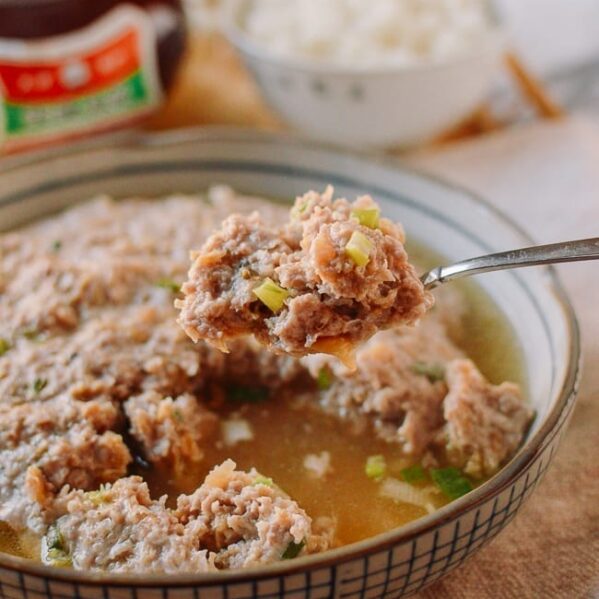
Ingredients
- 65 g dong cai (Tianjin preserved vegetables)
- 350 g ground pork (12 ounces)
- 1/2 cup water
- 1 tablespoon Shaoxing wine
- 2 teaspoons light soy sauce
- 1/4 teaspoon white pepper
- 1/4 teaspoon sesame oil
- 2 teaspoons cornstarch
- 1/2 teaspoon sugar
- 2 scallion (chopped)
Instructions
- Wash the dong cai in water a couple of times to wash off excess salt. Squeeze out the water after rinsing, so the vegetable is dry. Finely chop and add to the ground pork in a mixing bowl.
- To the pork and vegetables, add the water, Shaoxing wine, light soy sauce, white pepper, sesame oil, cornstarch and sugar.
- Whip everything together rapidly with a pair of chopsticks in one direction. This process emulsifies the fat into the meat and changes the overall texture. Stop only when the meat mixture resembles a uniform sticky, smooth paste. Stir in the chopped scallions.
- Spread the meat mixture evenly in a round, shallow, and heat proof bowl with a rim (to catch the juices that come out of the pork patty).
- Bring the water to a rapid boil in your steamer, and place the pork into the steamer. Cover and steam for 15 minutes.
- Serve immediately with steamed rice. There will be tasty juices in the bowl, great for spooning over rice. The pork will slowly reabsorb these juices as it sits, so that’s why it’s best to eat immediately.
